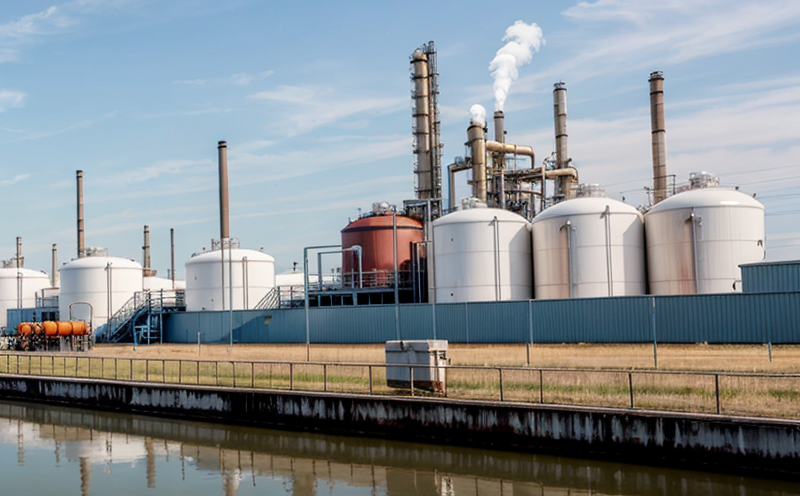GB T 18883 Indoor Air Chemical Safety Testing
The GB/T 18883-2002 standard sets forth requirements and test methods for evaluating indoor air quality, focusing on chemical safety. This service is crucial in ensuring that the air within buildings meets health and environmental standards set by national regulations.
Indoor environments are often enclosed spaces where a wide range of pollutants can accumulate. These pollutants include volatile organic compounds (VOCs), formaldehyde, benzene, ammonia, nitrogen oxides, carbon monoxide, sulfur dioxide, ozone, airborne microorganisms, radioactive materials, and other air contaminants that may affect human health.
The testing procedure involves several steps to ensure accuracy and reliability. Specimens are collected using appropriate sampling devices and transported under controlled conditions to the laboratory for analysis. Once in the lab, samples undergo various analytical techniques such as gas chromatography-mass spectrometry (GC-MS), high-performance liquid chromatography (HPLC), Fourier-transform infrared spectroscopy (FTIR), and others depending on the specific compound being tested.
Compliance with GB T 18883 is essential for maintaining healthy indoor environments, especially in public buildings like schools, hospitals, office complexes, hotels, shopping malls, etc. It helps prevent adverse health effects caused by prolonged exposure to harmful chemicals present in the air.
| Test Parameters | Units of Measurement |
|---|---|
| VOCs | PPM (Parts Per Million) |
| Formaldehyde | MG/M3 (Milligrams per cubic meter) |
| Benzene | MG/M3 (Milligrams per cubic meter) |
| Airborne Microorganisms | CFU/m3 (Colony Forming Units per cubic meter) |
Understanding the intricacies of this test helps stakeholders make informed decisions about improving indoor air quality. By adhering to GB T 18883 guidelines, organizations demonstrate their commitment to employee and visitor well-being.
- Identifying potential sources of contamination early.
- Implementing effective remediation strategies based on test results.
- Promoting healthier working and living conditions.
The importance of this service cannot be overstated, particularly given increasing concerns over indoor air quality. As society becomes more aware of the risks associated with poor air quality, there is growing demand for reliable testing services like those provided under GB T 18883.
Why It Matters
The significance of GB T 18883 indoor air chemical safety testing lies in its role as a critical tool for maintaining good health and preventing diseases linked to poor air quality. Poor indoor air can lead to various respiratory issues, allergies, headaches, dizziness, fatigue, nausea, and even more severe conditions such as asthma or cancer.
In addition to personal health benefits, ensuring compliance with these standards also protects businesses from potential legal liabilities related to occupational hazards. Employers have a responsibility under labor laws to provide safe working environments free from excessive levels of harmful substances. Failure to do so could result in fines, lawsuits, and damage to corporate reputation.
Moreover, organizations that prioritize indoor air quality often see improvements in productivity and employee satisfaction. Workers who breathe cleaner air are generally more alert, focused, and less prone to absenteeism due to illness. This translates into higher overall performance and better business outcomes.
| Health Implications | Risks Associated With Poor Air Quality |
|---|---|
| Respiratory Issues | Chronic Obstructive Pulmonary Disease (COPD), Asthma, Bronchitis. |
| Allergies and Irritants | Hay Fever, Sneezing Spells, Watery Eyes. |
| Cognitive Impairment | Decreased Memory Function, Difficulty Concentrating. |
By investing in regular testing and necessary corrective measures, companies not only enhance their reputation but also contribute positively to public health. This proactive approach underscores the importance of adhering to standards like GB T 18883.
Scope and Methodology
The scope encompasses all aspects related to the quality control process, including sampling procedures, analytical methods, data interpretation, and reporting formats. The methodology specifies detailed steps for collecting air samples from different locations within a building, ensuring representative sampling.
| Sampling Procedures | Analytical Methods Used |
|---|---|
| Select appropriate sampling devices based on the type of contaminant. | Gas Chromatography-Mass Spectrometry (GC-MS), High-Performance Liquid Chromatography (HPLC). |
| Ensure proper labeling and documentation during sample collection. | Fourier-Transform Infrared Spectroscopy (FTIR), Inductively Coupled Plasma Mass Spectrometry (ICP-MS). |
Data from multiple locations should be averaged to determine compliance with specified limits. Reporting must include all relevant findings along with recommendations for improvement if necessary.
Sample preparation typically involves conditioning the sample to remove moisture and other interfering components before analysis. Instruments used vary according to the compounds being detected, ensuring accuracy and precision in measurements.
Use Cases and Application Examples
- Post-occupancy evaluations of newly constructed or renovated buildings.
- Ongoing monitoring during occupancy periods to track changes over time.
- Investigations into unexplained health complaints among occupants.
This testing is particularly relevant for large facilities where multiple sources might contribute to poor air quality. For instance, manufacturing plants emitting hazardous chemicals or offices with inadequate ventilation systems could benefit greatly from such assessments.
| Application Scenario | Potential Issues Addressed |
|---|---|
| Newly Built Office Complex | Pollutants generated during construction, off-gassing materials used in decoration. |
| Hotel with Central Heating and Cooling Systems | Efficiency of filters, emissions from boilers or furnaces. |
| School Campus Near Heavy Traffic Routes | Particles from vehicle exhaust, allergens present in dust. |
These examples illustrate how GB T 18883 testing can be applied across diverse settings to ensure optimal indoor air quality. Understanding these scenarios allows professionals to tailor their approach effectively when conducting tests according to this standard.





